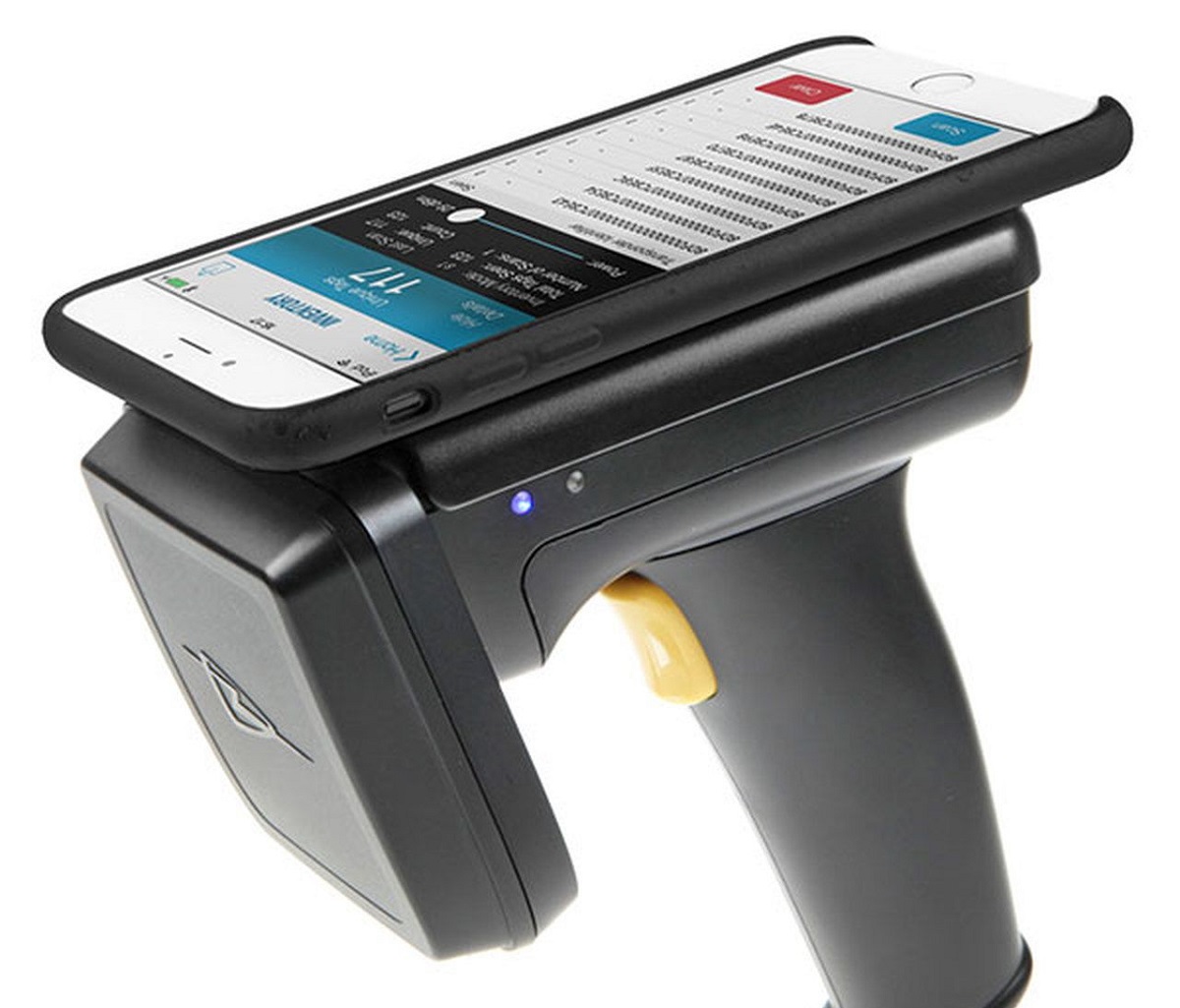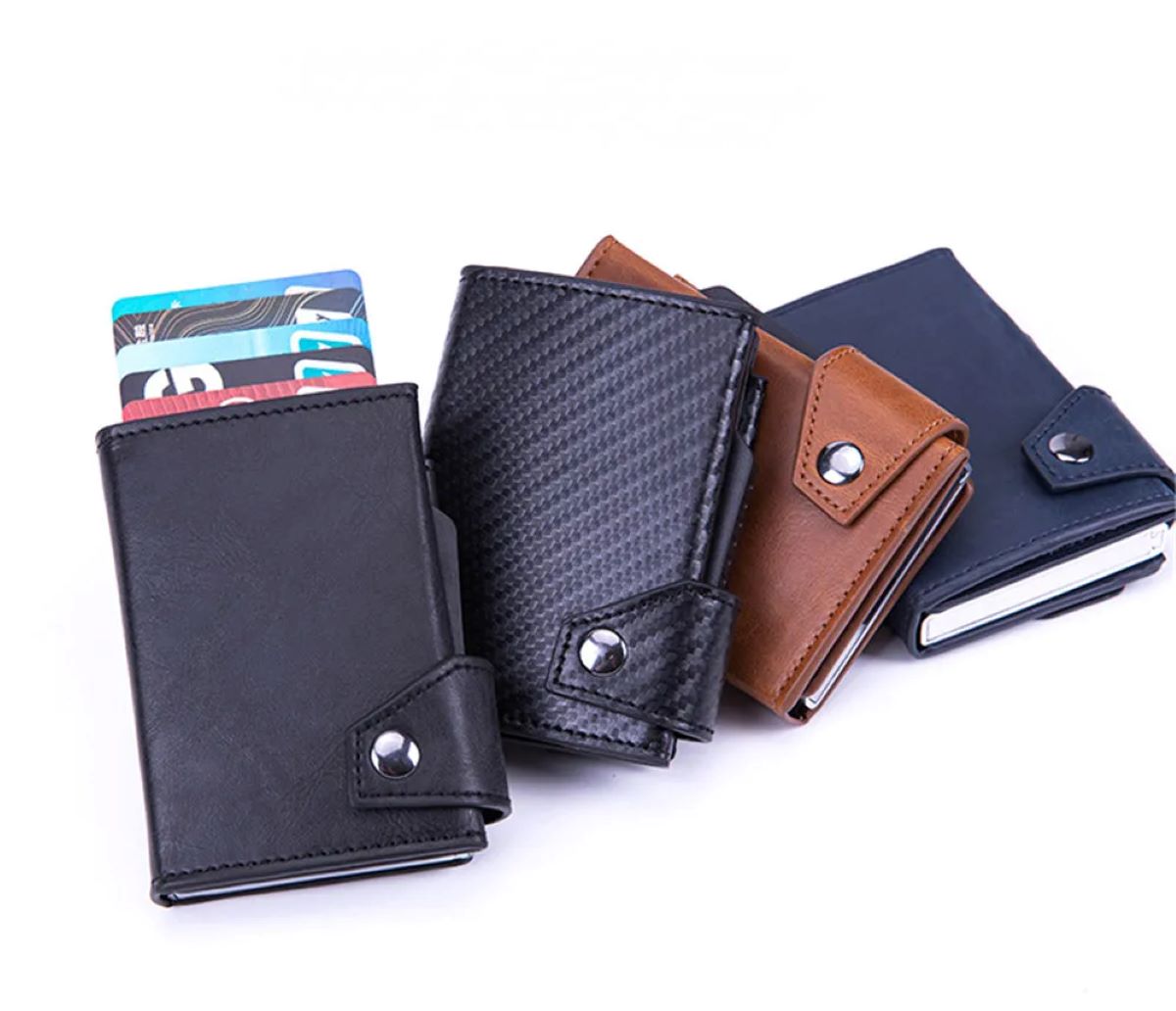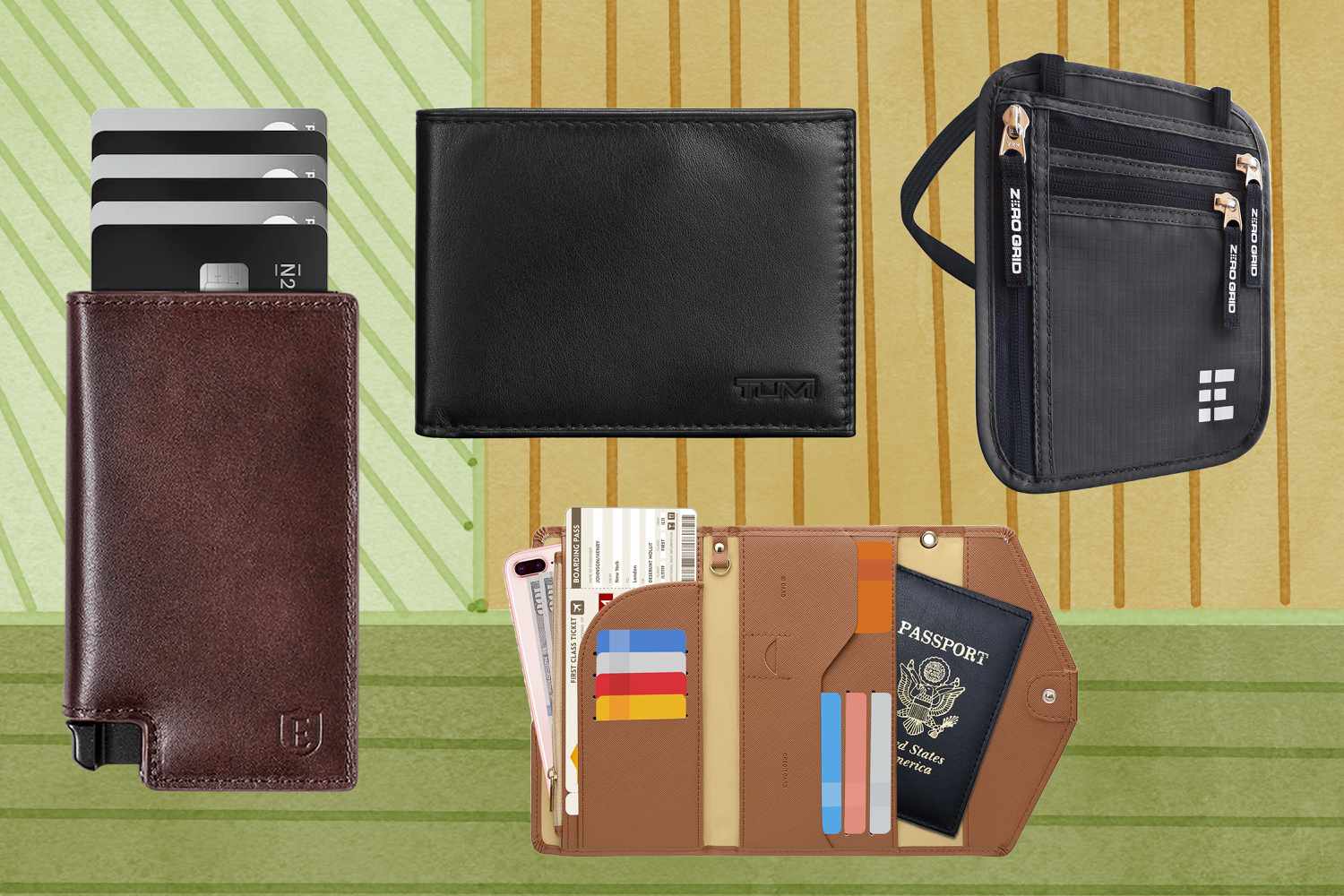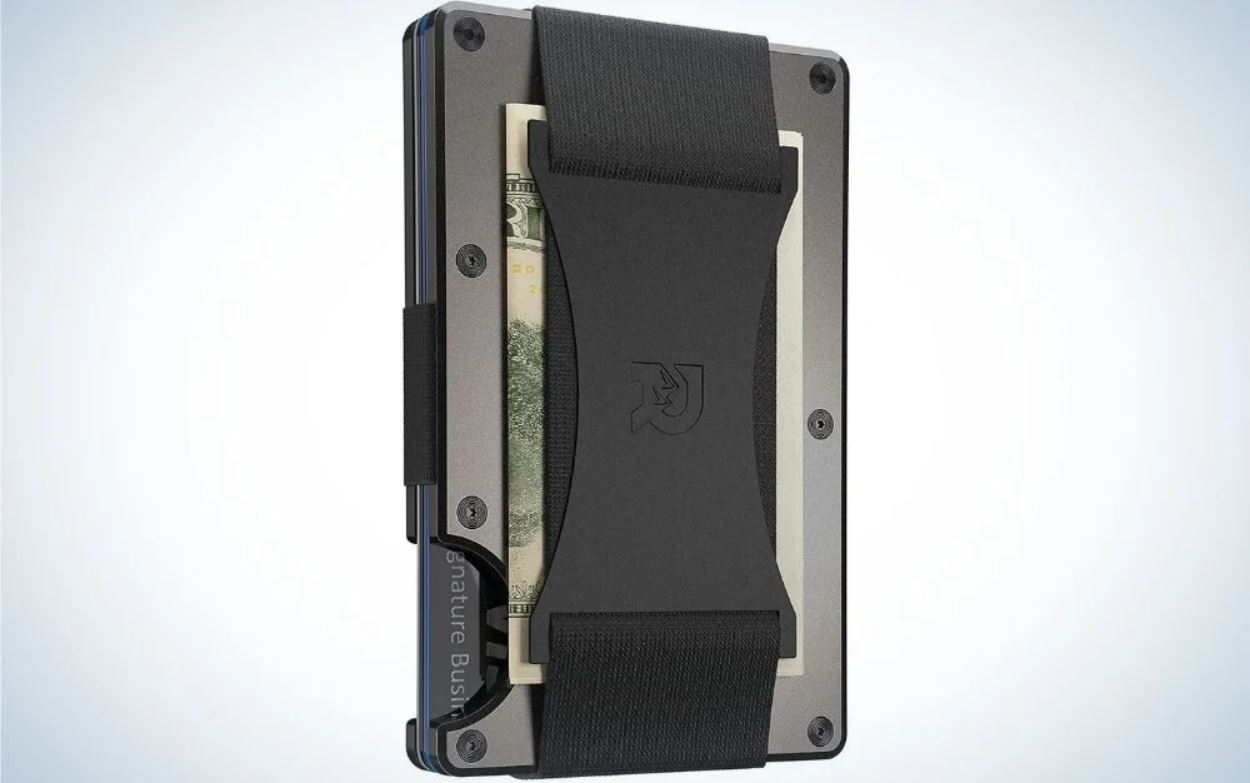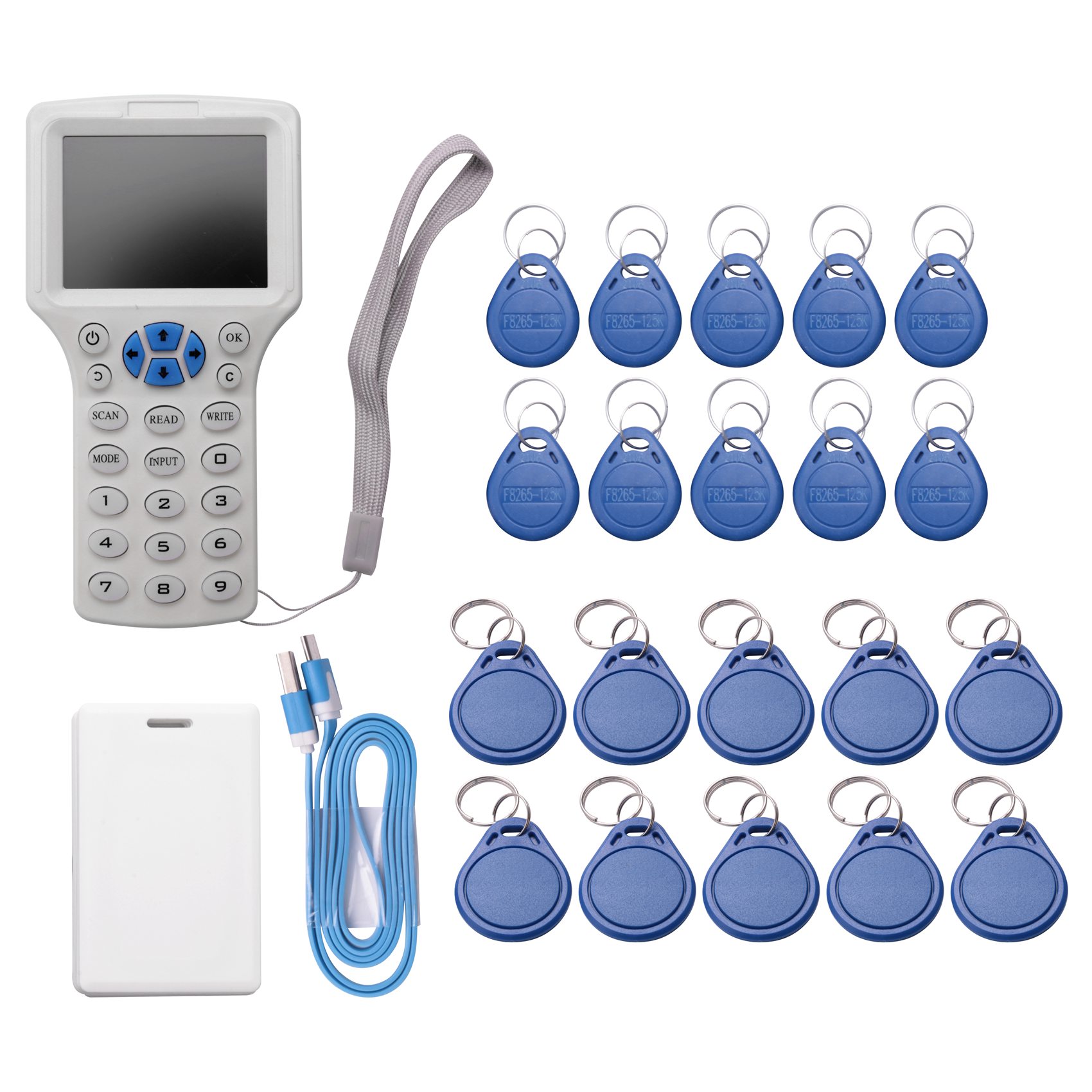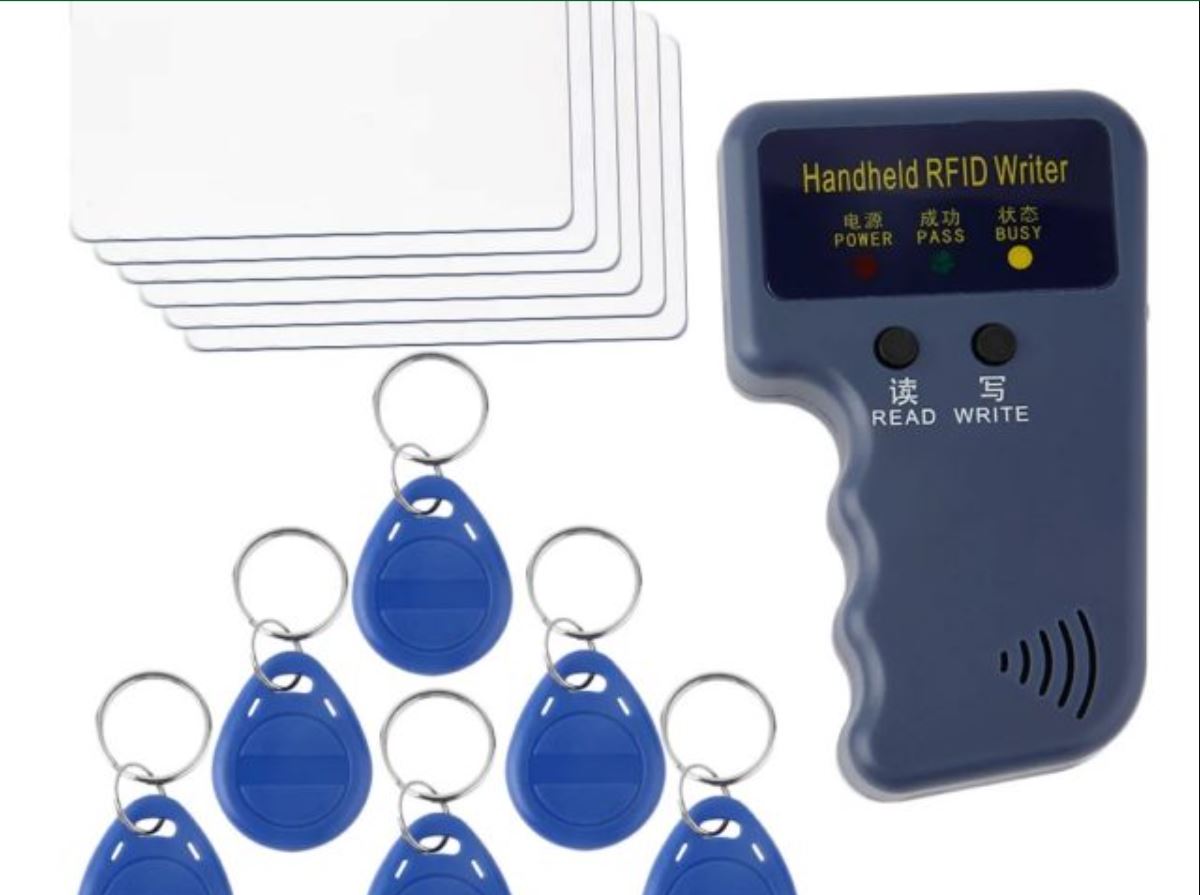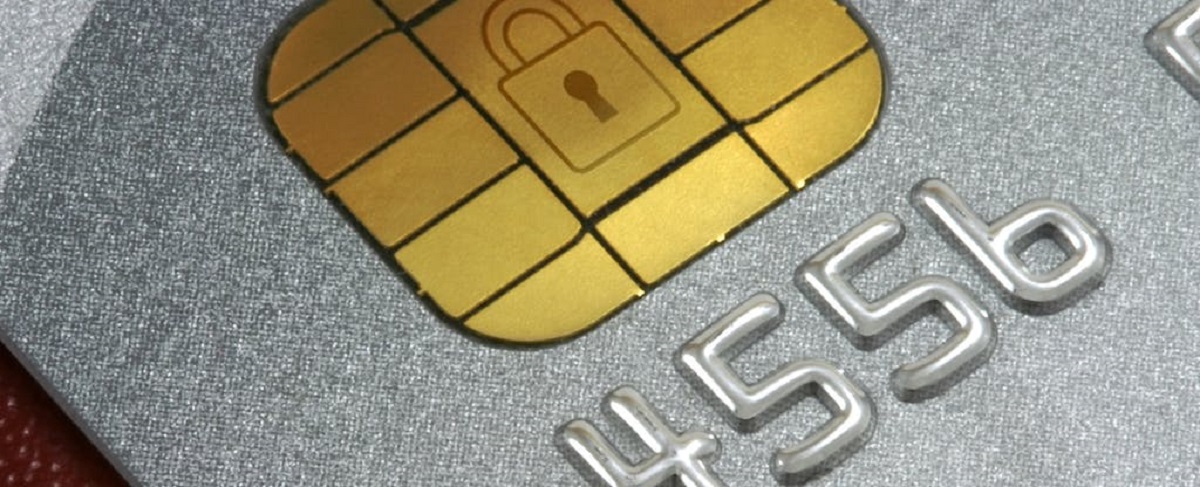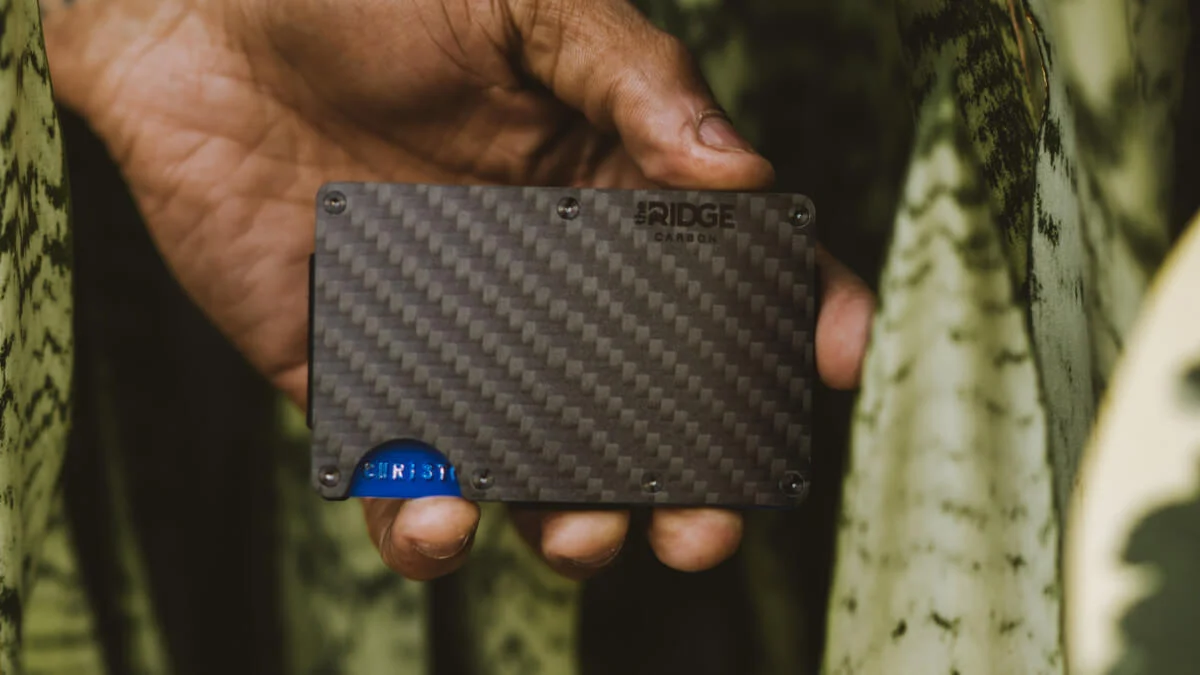What is an RFID Reader?
An RFID (Radio Frequency Identification) reader is a device that uses radio waves to wirelessly communicate with RFID tags or transponders. These readers are essential components in RFID systems, enabling the retrieval and transmission of data from the RFID tags. With their ability to read and process information from a variety of tags simultaneously, RFID readers play a crucial role in various industries, including retail, logistics, healthcare, and transportation.
The main function of an RFID reader is to send an electromagnetic signal to the RFID tag and receive the data stored within it. Unlike traditional barcode systems, which require line-of-sight scanning, RFID readers can capture data from tags within proximity without physical contact. This contactless communication makes RFID technology ideal for applications that require fast and efficient data collection.
An RFID reader typically consists of three main components: a transceiver, an antenna, and a controller. The transceiver emits radio waves, while the antenna receives the reflected signals from the RFID tags. The controller processes the received data and facilitates the integration of the RFID reader into the overall system, allowing for seamless data transmission and integration with other systems.
RFID readers can operate at different frequencies, depending on the specific application and environment. The most commonly used frequencies are low frequency (LF), high frequency (HF), and ultra-high frequency (UHF). Each frequency has its own advantages and limitations, such as read range and data transfer speed.
Overall, RFID readers are vital components in RFID systems, enabling businesses to automate and streamline processes, improve inventory management, enhance supply chain visibility, and enhance customer experience. Understanding how RFID readers work and how to select the right one for your specific needs is crucial for maximizing the benefits of RFID technology in your business.
The Components of an RFID Reader
An RFID reader comprises several key components that work together to facilitate communication with RFID tags. Understanding these components is essential for comprehending the functioning of an RFID reader. Let’s take a closer look at each component:
- Transceiver: The transceiver is responsible for transmitting and receiving radio frequency signals. It converts electrical signals into radio waves and vice versa. The transceiver determines the frequency at which the RFID reader operates and plays a crucial role in the range and reliability of communication between the reader and the RFID tags.
- Antenna: The antenna is an essential part of an RFID reader as it enables the transmission and reception of radio frequency signals. It emits an electromagnetic field that energizes the RFID tags in its vicinity. The antenna captures the signals reflected back by the tags, allowing the reader to gather data from the tags. The design and configuration of the antenna significantly impact the read range and efficiency of the RFID reader.
- Controller: The controller acts as the brain of the RFID reader, managing the overall operation and functionality. It processes the received data from the antenna, decodes the information, and relays it to the connected system. Additionally, the controller may have integrated memory and processing capabilities to handle certain tasks without external dependencies.
- Power Supply: RFID readers require a power source to operate. They can be powered by a variety of options, including batteries, power adapters, or connection to an external power source. The power supply ensures that the reader has sufficient energy to transmit and receive signals to and from the RFID tags.
- Interface: The interface provides a means for connecting the RFID reader to other devices or systems. It allows for data exchange and integration with existing infrastructure, such as computers, networks, or other RFID-enabled systems. Common interfaces include USB, Ethernet, RS-232, and wireless connections like Bluetooth. The choice of interface depends on the intended application and connectivity requirements.
These components work in harmony to enable effective communication between the RFID reader and the RFID tags. Each component has its own importance and contributes to the overall performance and functionality of the reader. By understanding these components, businesses can make informed decisions when selecting an RFID reader that best suits their specific requirements.
How Does an RFID Reader Work?
An RFID reader works by utilizing radio frequency technology to communicate with RFID tags. The process involves several steps, including initiation, signal transmission, data reception, and decoding. Let’s dive into the working principles of an RFID reader:
- Initiation: The RFID reader sends out a radio frequency signal, commonly referred to as an interrogation signal or query, using its transceiver and antenna. This signal serves as a request for nearby RFID tags to respond.
- Signal Transmission: The emitted radio frequency signal from the reader antenna reaches the RFID tags in its vicinity. The signal energizes the tags by inducing an electrical current, allowing them to power up.
- Data Reception: Upon receiving the interrogation signal, the RFID tags within range respond by sending back a signal containing their unique identification data. This signal is commonly known as the tag response or tag reply.
- Data Decoding: The RFID reader’s antenna captures the signals from the responding tags. The signal is then passed to the controller, which decodes the data encoded within the signal. The controller processes the received information, extracts the unique identification data of each tag, and prepares it for further processing or integration with other systems.
It’s worth noting that there are two main types of RFID systems: passive and active. Passive RFID systems rely on the energy obtained from the reader’s interrogation signal to power up and respond. This energy transfer occurs through the process of electromagnetic induction. On the other hand, active RFID systems have tags equipped with their own power source, typically a battery, which enables them to proactively transmit their identification data to the reader.
The working range of an RFID reader depends on various factors, including the power of the reader, the frequency used, and the type of RFID tags being used. Low-frequency RFID readers typically have shorter read ranges, typically up to a few centimeters, while ultra-high frequency readers can achieve read ranges of several meters.
Overall, this seamless process of transmitting and receiving signals enables RFID readers to gather data from multiple tags in a fast and efficient manner. By understanding how RFID readers work, businesses can harness the benefits of this technology, such as improved inventory management, enhanced supply chain visibility, and increased operational efficiency.
Types of RFID Readers
RFID readers are available in different types, each designed to cater to specific needs and applications. The type of RFID reader chosen depends on factors such as the desired read range, operating frequency, portability, and connectivity requirements. Here are some of the common types of RFID readers:
- Handheld RFID Readers: These readers are portable devices that can be held and operated by hand. They offer mobility and flexibility, allowing users to move around and scan RFID tags in various locations. Handheld readers are commonly used in applications such as inventory management, asset tracking, and point-of-sale systems.
- Fixed RFID Readers: Fixed readers, also known as stationary readers, are designed for installation in a fixed position. They are typically mounted on walls, ceilings, or gates and are used in environments where continuous monitoring of tagged items is required. Examples of applications for fixed RFID readers include access control, vehicle tracking, and real-time location systems.
- Embedded RFID Readers: These readers are integrated into other devices or systems, such as kiosks, machines, or point-of-sale terminals. Embedded readers offer a seamless and compact solution, eliminating the need for separate reader hardware. They are commonly used in applications where space is limited or integration with other systems is crucial.
- Desktop RFID Readers: Desktop readers are designed for use on a desk or work surface. They are typically connected to a computer or laptop through USB or other wired/wireless interfaces. Desktop readers are commonly used in applications such as document tracking, library management, and asset inventory.
- Long-Range RFID Readers: Long-range readers are capable of reading RFID tags from a significantly greater distance compared to other types of readers. They are often used in applications such as vehicle identification, logistics, and supply chain management, where tags need to be detected from a distance of several meters or more.
It’s important to consider the specific requirements of your application when selecting an RFID reader type. Factors such as read range, mobility, connectivity, and environmental conditions can significantly impact the performance and effectiveness of the chosen reader.
Furthermore, RFID readers can operate at different frequencies, including low frequency (LF), high frequency (HF), and ultra-high frequency (UHF). Each frequency has its own benefits and limitations, with UHF being the most widely used due to its longer read range and compatibility with a wide range of applications.
By understanding the different types of RFID readers available, businesses can make an informed decision and select the most suitable reader for their specific needs, ensuring optimal performance and functionality in their RFID systems.
Applications of RFID Readers
RFID readers have a wide range of applications across various industries. Their ability to wirelessly communicate with RFID tags makes them valuable tools for streamlining processes, increasing efficiency, and enhancing data visibility. Here are some of the common applications of RFID readers:
- Inventory Management: RFID readers play a crucial role in inventory management systems by enabling fast and accurate identification and tracking of items. They can quickly scan multiple tags simultaneously, allowing businesses to efficiently monitor stock levels, streamline replenishment processes, and reduce errors and manual handling.
- Supply Chain Management: RFID readers provide real-time visibility and traceability of goods throughout the supply chain. By integrating RFID technology into logistics processes, businesses can improve shipment accuracy, automate receiving and shipping operations, prevent theft and counterfeiting, and enhance overall supply chain efficiency.
- Retail and Point-of-Sale: RFID readers are used in retail environments to enable quick and efficient inventory counts, improve stock replenishment processes, and enhance customer experiences. They can be integrated with point-of-sale systems, allowing for seamless and accurate inventory management, reducing out-of-stock situations, and improving overall sales performance.
- Asset Tracking: RFID readers are widely used for tracking and managing valuable assets, such as equipment, tools, and vehicles. They enable businesses to locate and monitor assets in real-time, reduce loss and theft, improve maintenance scheduling, and enhance asset utilization and productivity.
- Access Control and Security: RFID readers are utilized in access control systems to grant or restrict access to secured areas. They can authenticate and validate employee or visitor credentials quickly and efficiently, improving overall security and reducing the reliance on traditional keys or swipe cards.
- Healthcare: RFID readers are employed in healthcare settings for patient and asset tracking, medication management, and inventory control. They enhance patient safety by ensuring accurate administration of medications, tracking medical equipment and devices, and improving overall operational efficiency within healthcare facilities.
These are just a few examples of the many applications of RFID readers across various industries. The versatility and potential of RFID technology make it a valuable asset for businesses looking to improve efficiency, visibility, and accuracy in their operations and processes.
Advantages and Limitations of RFID Readers
RFID readers offer several advantages that make them valuable tools in various industries. However, like any technology, they also have certain limitations to consider. Understanding both the advantages and limitations of RFID readers is crucial for making informed decisions regarding their implementation. Let’s explore them:
Advantages of RFID Readers:
- Automatic and Fast Data Collection: RFID readers allow for automatic and rapid data capture. They can read multiple tags simultaneously, significantly reducing the time and effort needed for data collection compared to manual or barcode-based systems.
- Non-contact and Reliable: RFID readers operate without physical contact with the tags, reducing wear and tear and minimizing the risk of damage. They provide reliable data capture even in harsh environments, where barcode labels might deteriorate or become unreadable.
- Enhanced Efficiency and Accuracy: RFID technology improves operational efficiency by enabling quick and accurate identification and tracking of items. It reduces manual errors and enhances accuracy in inventory management, asset tracking, and supply chain processes.
- Increased Visibility and Real-time Information: RFID readers provide real-time visibility into the whereabouts and status of tagged items. This visibility helps businesses make informed decisions, optimize processes, and respond promptly to changes or issues in their operations.
- Improved Customer Experience: RFID technology can enhance customer experiences by enabling faster checkout processes, ensuring product availability, and providing accurate information on products and promotions.
Limitations of RFID Readers:
- Cost: The initial cost of implementing an RFID system, including RFID readers, tags, and infrastructure, can be higher compared to traditional barcode systems. However, the costs have been decreasing over the years as the technology becomes more widespread.
- Read Range and Interference: The read range of RFID tags and readers can be limited, especially in environments with interference from metal or other radio wave-reflective materials. Proper planning and optimization of the RFID system can help overcome these obstacles.
- Privacy and Security Concerns: RFID technology raises concerns regarding privacy and security, as it relies on the transmission of data wirelessly. Proper security measures, such as encryption and access controls, need to be implemented to protect sensitive information.
- Compatibility: Different RFID frequencies and protocols exist, and compatibility between readers and tags can be an issue. It’s essential to ensure that the chosen RFID reader is compatible with the desired tags and systems.
- Infrastructure and Integration: Deploying an RFID system may require infrastructure modifications to optimize read ranges and ensure seamless integration with existing processes and systems.
Despite these limitations, the advantages of RFID readers outweigh the drawbacks for many applications. By carefully considering the specific requirements and limitations, businesses can harness the benefits of RFID technology while effectively managing its limitations.
Choosing the Right RFID Reader for Your Needs
When selecting an RFID reader, it’s important to consider several factors to ensure it meets your specific requirements. Understanding the key considerations will help you choose the right RFID reader for your needs. Here are some factors to consider:
- Application and Use Case: Determine the specific application and use case for the RFID reader. Consider factors such as the environment, read range needed, number of tags to be read simultaneously, and required data transfer speed. This will help you select an RFID reader that is optimized for your specific requirements.
- Frequency: RFID readers operate at different frequencies, such as LF, HF, and UHF. Consider the frequency that is compatible with your tags and best suited for your application. Factors to consider include read range, interference, and tag type compatibility.
- Read Range and Power: Assess the required read range for your application and select an RFID reader with an appropriate power output. Longer read ranges may require readers with higher power outputs for reliable tag detection.
- Connectivity and Integration: Consider the connectivity options and integration capabilities of the RFID reader. Determine if you need wired or wireless connectivity such as USB, Ethernet, Bluetooth, or Wi-Fi to seamlessly integrate the reader with your existing systems and infrastructure.
- Scalability and Flexibility: Evaluate the scalability and flexibility of the RFID reader. Determine if the reader can support future expansion or additional features as your needs evolve. Consider factors such as upgrade options, software compatibility, and customization capabilities.
- Price and Cost: Consider the upfront and long-term costs associated with the RFID reader. Evaluate the total cost of ownership, including not only the reader itself but also additional components like tags, antennas, and infrastructure modifications. Strike a balance between the features you need and your budget.
- Reliability and Support: Research the reliability and reputation of the RFID reader manufacturer. Look for reviews, customer feedback, and product specifications to gauge the reliability and durability of the reader. Additionally, consider the availability of technical support and potential warranties.
By carefully considering these factors, you can choose an RFID reader that aligns with your specific requirements and helps you achieve the desired outcomes for your application. It’s important to conduct thorough research, consult with experts if needed, and test the reader before making a final decision to ensure that it meets your expectations and delivers the desired performance.
Common Uses for RFID Readers
RFID readers have become integral tools across various industries, enabling efficient and accurate data capture and enhancing business processes. Here are some common uses for RFID readers in different sectors:
- Retail: In the retail industry, RFID readers are used for inventory management, allowing for real-time tracking and monitoring of stock levels. They enable faster and more accurate inventory counts, reducing out-of-stock situations and improving overall supply chain management.
- Logistics and Supply Chain: RFID readers are widely used in logistics and supply chain management to track and trace goods throughout the entire supply chain. They provide real-time visibility into the location and status of shipments, improving overall efficiency, reducing manual errors, and preventing loss and theft of goods.
- Healthcare: In the healthcare industry, RFID readers are utilized for patient tracking, medication management, and asset management. They ensure accurate patient identification, simplify medication administration processes, and enable better tracking of medical equipment and devices.
- Manufacturing: RFID readers play a crucial role in manufacturing processes by tracking and managing production inventory, ensuring the right components are used at each stage, and improving overall workflow efficiency. They also facilitate asset tracking and maintenance planning in manufacturing facilities.
- Access Control and Security: RFID readers are utilized in access control systems to provide secure and efficient entry to authorized individuals. They enable quick authentication and validation of employee or visitor credentials, enhancing overall security and reducing reliance on traditional keys or swipe cards.
- Asset Tracking: RFID readers are used for asset tracking and management in various industries, such as construction, IT, and equipment rental. By tagging assets and utilizing RFID readers, businesses can easily locate and track assets, reducing loss and improving maintenance and utilization.
- Library Management: Libraries utilize RFID readers to streamline book check-ins and check-outs, automate inventory management, and prevent theft. RFID readers enable fast and accurate identification of books and eliminate the need for manual scanning of barcodes.
These are just a few examples of the many common uses for RFID readers in various industries. The versatility and efficiency of RFID technology make it invaluable for automating processes, improving data accuracy, and enhancing overall operational efficiency. By implementing RFID readers, businesses can benefit from improved inventory control, enhanced supply chain visibility, reduced errors, and enhanced customer experiences.







